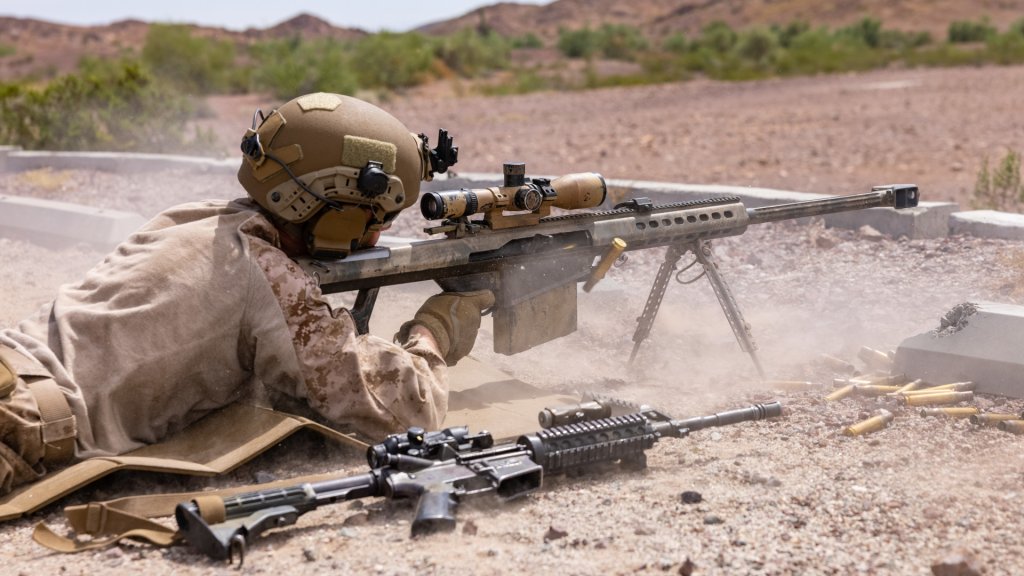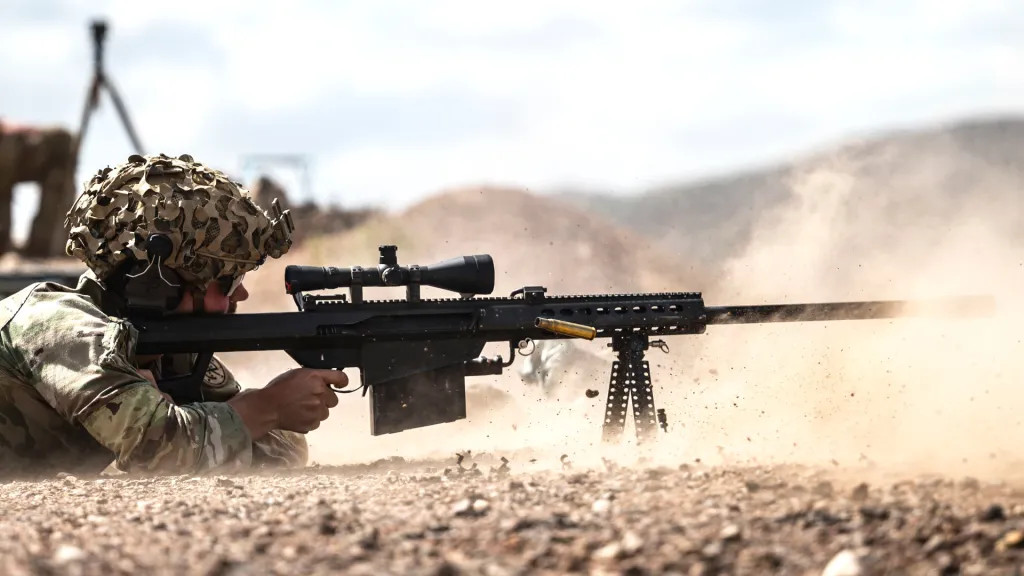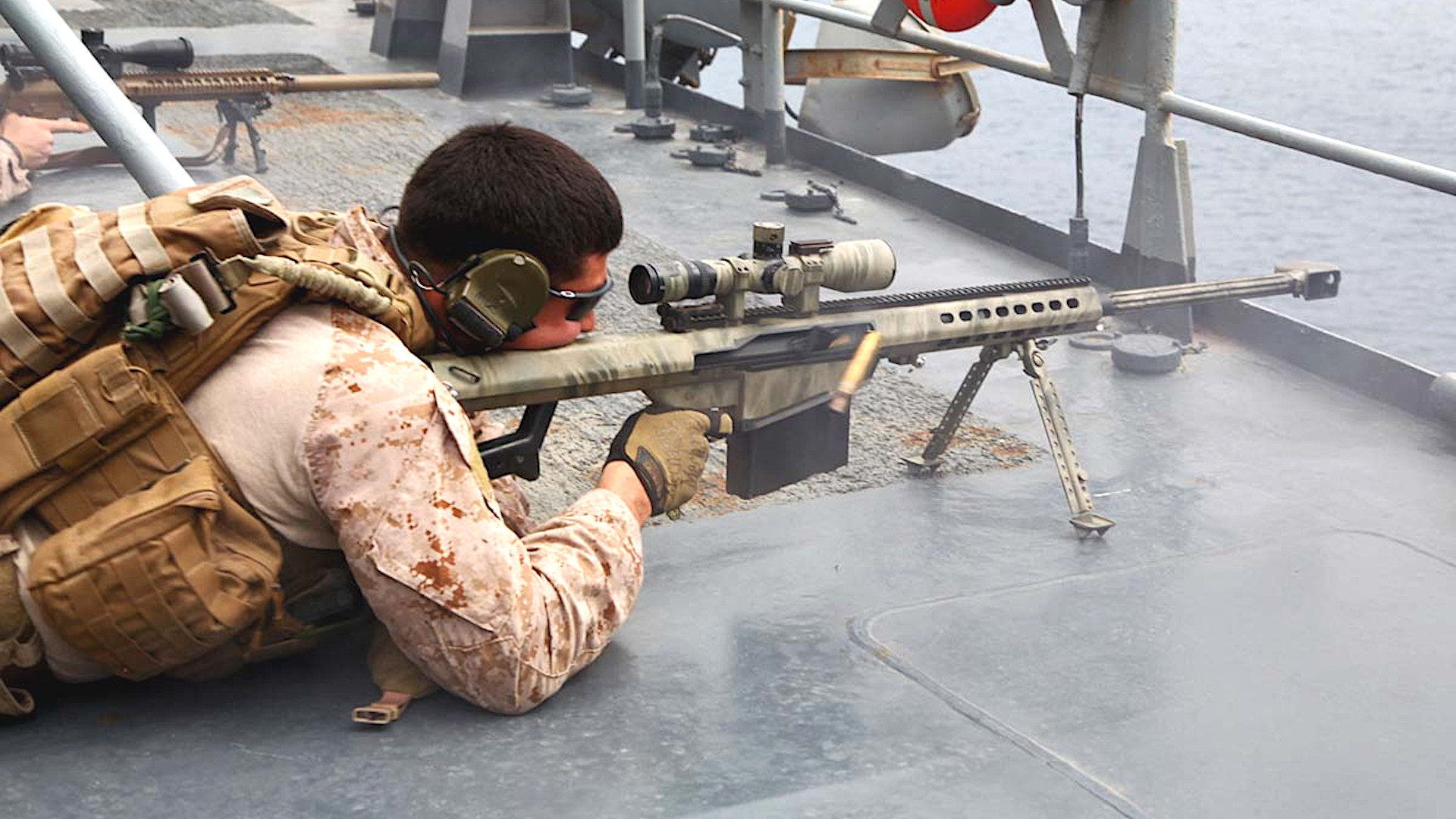U.S. Special Operations Command (SOCOM) is no longer looking for a new heavyweight sniper/anti-materiel rifle, at least for now. The Extreme Long Range Sniper Rifle (ELR-SR) effort had been seeking possible successors to the famed Barrett M82 family of .50 caliber semi-automatic rifles, as well as lesser-known bolt-action McMillan Mk 15s in the same caliber.

SOCOM quietly announced it was shelving the ELR-SR project back on September 26. “At the moment, we are not moving forward with this effort,” the command said in a brief contracting notice.
“We appreciate your interest and hard work in responding to this RFI [request for information],” the notice added. “Due to changing priorities, we are pursuing other efforts.”
No further details were provided. The War Zone has reached out to SOCOM for more information.
SOCOM’s Special Operations Forces Acquisition, Technology, and Logistics Center (SOF AT&L) first publicly laid out requirements for the ELR-SR last December. This included demands for the new weapon to be a bolt-action design and be consistently effective out to a range of at least 2,500 meters [approximately 2,734 yards] – greater than the stated effective range of M82 series rifles (including modernized M107 variants) or the Mk 15. The new rifle also had to be shorter and lighter than the existing .50 caliber types.

At the annual SOF Week conference in May, SOCOM confirmed that it was open to rifles in new calibers to meet its ELR-SR needs and that the effort was building off previous work done by the Pentagon’s Irregular Warfare Technical Support Directorate (IWTSD). An earlier IWTSD project called Extreme Sniper Strike Operations (ESSO) has produced a new very long-range precision cartridge called the .375 EnABELR (Engineered by Applied Ballistics for Extreme Long Range) and a bolt-action rifle to go along with it, which you can read more about here. As of at least March, IWTSD was still pursuing further development of the .375 EnABELR round.

It is not entirely clear if the “other efforts” SOCOM says it is now pursuing in lieu of ELR-SR are related to meeting the same or similar underlying operational needs, but in a different way, or if they are completely separate requirements that have taken precedence.
“Even if it’s [ELR-SR] just [the] improvement of our current .50 Cal systems, that’s fine too,” U.S. Army Col. John “Tosh” Lancaster had told The War Zone and other attendees at the SOF Week conference earlier this year. “We can make the .50 Cal better than it is right now. We haven’t done anything with that in a while.”
Col. Lancaster is the Program Manager for Special Operations Forces (SOF) Lethality with U.S. Special Operations Command’s (SOCOM) SOF Warrior Program Executive Office. Both the original Barrett M82 and the McMillan TAC-50 on which the Mk 15 is based were first developed in the 1980s.
Though there are no indications one way or the other that the two things are related, SOCOM’s announcement about ELR-SR came three days after Barrett received a sole-source contract from the U.S. Army worth nearly $15 million for an unspecified number of M82/M107-series rifles, as well as “spare parts, accessories and training.”

An official justification for the Army’s sole-sourced deal with Barrett is heavily redacted. None of the unredacted sections elaborate on the reason for buying the rifles or their expected recipients. Some of the guns might be intended to replace examples the U.S. military has transferred to Ukraine or be bound themselves for foreign allies and partners, as well as other branches of the U.S. government.
Barrett’s .50 caliber semi-automatic rifle line is in widespread use globally. On September 4, the company announced a new direct deal with the Norwegian armed forces to upgrade their existing M82A1s to the newer M107A1 standard.

There clearly continues to be demand, including among special operations forces, for the kinds of very long-range precision engagement capabilities that .50 caliber heavyweight sniper/anti-materiel rifles offer. These rifles can be very useful for trying to destroy or at least disrupt a variety of specialized targets including fuel and ammunition storage dumps, radar dishes, and even light vehicles, as well as enemy personnel. They can also fire a range of specialized ammunition, including types capable of producing incendiary and/or explosive effects.
What other new capabilities SOCOM might now pursue instead of ELR-SR, or if it ultimately returns to seeking another similar new long-range precision rifle, remains to be seen. In the meantime, American special operators will continue to use their M82-series and Mk 15 rifles.
Contact the author: joe@twz.com
